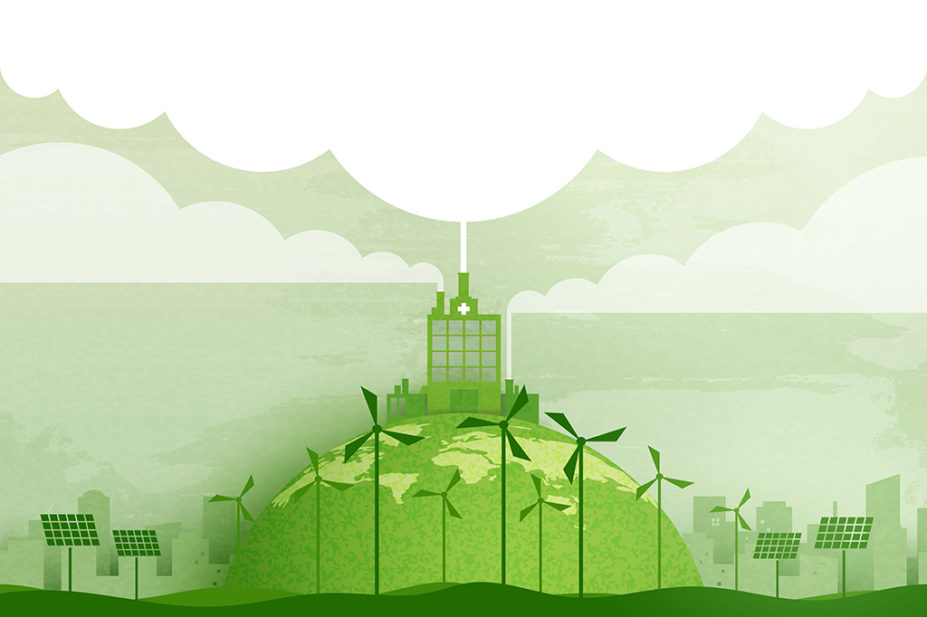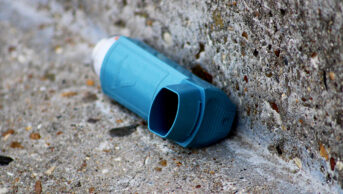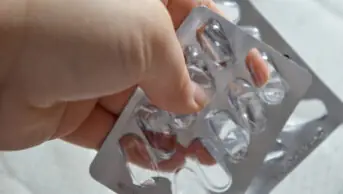
Alisdair Macdonald / Shutterstock.com
By our own making, we have exited the temperate Holocene and entered the Anthropocene, with all its uncertainty. ‘Life as we know it’ is steadfastly being tested to the point of fracture. Early in 2022, new indicators pointed to us having breached five out of nine of our planetary boundaries deemed necessary to sustain human life for centuries to come[1]. Persistent lassitude on emission reduction and adaption measures will ensure the collapse of interconnected ecosystems and create an untenable strain felt by multiple generations[2].
In addressing climate change, as with any complex challenge, there is an inevitable time lag between education and true cognition before we take meaningful agency. With respect to our climate predicament, mitigation efforts have been persistently thwarted by powerful oil lobbyists casting enough doubt on the weight of empirical evidence that our climate is warming at an unprecedented rate[3]. Make no mistake… it is.
Speaking to colleagues who have worked on climate change across several decades, they often describe the loneliest, angst-ridden part of the job is getting people to really understand the climate crisis and become operationally active in mitigation and adaption measures. This ‘road to Damascus’ moment can be deeply unnerving, yet so profound that it turns the most mild-mannered, law-abiding scientist, IT professional, account clerk, clinician and primary school teacher into climate activists, who will willingly superglue themselves to public infrastructure in the desperate hope that policymakers, politicians and we, the public, listen, understand and take ownership[4].
Healthcare is so polluting, it rivals the aviation industry in terms of its global emissions
Since 1995, our world leaders have met routinely to assess, dispute and agree climate protection strategies at the Conference of the Parties[5]. Healthcare was initially absolved from taking deep mitigation measures and sustainability efforts were limited to estate management and energy efficiencies. Clinical choices and procurement were shielded by the adage ‘the patient comes first’, failing to acknowledge that, in delivering a high emission health service, we are contributing to the health burden. Healthcare is so polluting, it rivals the aviation industry in terms of its global emissions, and the Greener NHS programme estimates the respiratory injury caused by NHS road mileage alone costs the health system £345m each year[6].
Only ten years ago, organisations and programmes, such as the Sustainable Development Unit (now the Greener NHS programme), Centre for Sustainable Health Care or Health Care without Harm, were peripheral entities. I can only imagine the frustration felt by the committed individuals working in these organisations, passionately trying to encourage healthcare professionals to care about this planet for the betterment of all. Indeed, NHS Scotland had no definitive programme dedicated to sustainability in clinical care until late 2021[7].
Without doubt, the mood within the NHS has changed. This awakening is most notable within anaesthesia, where the profession has embraced climate ownership. Around 2012, papers started emerging on the global warming potential of comparative anaesthetic agents and techniques[8–10]. There followed the inevitable lag of five to six years as peer review literature transcended into environmental agency. From spring 2017, we began to see a drop in volatile emissions across various health boards and trusts. In NHS Scotland, these annual emissions fell from 7,423 tonnes to 1,088 tonnes in carbon equivalents (tCO2e) between 2018/2019 and 2021/2022 (1 tCO2e is comparative to a flight from Edinburgh to New York).
Anaesthetists utilised several mitigating actions to drive down their volatile footprint, including removing the volatile agent desflurane from their practice
This is fascinating because, as far as I’m aware, no other healthcare professional group has spear-headed such a rapid change in clinical emissions, and they certainly didn’t wait to be told. Anaesthetists utilised several mitigating actions to drive down their volatile footprint, including removing the volatile agent desflurane from their practice. Desflurane has a notably high 100-year global warming potential — 2,540 times that of carbon dioxide — and, given its relatively low potency, treble the amount is needed compared with sevoflurane[11]. In practical terms, it is 60 times more environmentally polluting than sevoflurane. Additionally, anaesthetists have continuously ‘leaned up’ their practice, through low anaesthetic gas flows coupled with closed circuit anaesthesia, and by choosing regional or total intravenous anaesthesia where appropriate[12].
It was, in fact, this successful climate stewardship that prompted me, as a pharmacist, to question why anaesthetic nitrous oxide (N2O) emissions were so high. The answer was a bit of surprise to everyone — the anaesthetists were barely using N2O and system loss was the crux of the problem[13]. Based on continual reporting and mitigation activities within NHS Scotland, we estimate that of the 10,375 tCO2e of anaesthetic N2O emissions in 2018/19; 9,011 tCO2e was through system loss.
Within NHS sites, establishing a nitrous oxide mitigation programme requires strong leadership, with multidisciplinary engagement from facilities, pharmacy, engineering and clinical teams[14]. My direct experience as a sustainability consultant has shown that the strength of collaboration and shared ownership is closely correlating to efficiencies in mitigation.
By spring 2024, Scotland will be at the arduous tail-end of trying to flatten the last of their anaesthetic emissions. In this endeavour, much ado has been made about the potential of volatile capture technology. Several manufacturers have emerged on to the UK market; their products offer capture of the exhaled volatile agent, allowing for purification and return of volatile agents to the pharmaceutical supply chain. Volatile capture is in its infancy, thus imperfect, and one pilot study indicated capture to be as low as 25% for a single manufacturer[15].
Best practice should minimise the risk of emissions at every stage of the journey
A vital part of climate leadership is understanding that emission minimisation follows the same principals as risk mitigation strategies. Best practice should minimise the risk of emissions at every stage of the journey, thus a single point of failure should not result in a catastrophic emission event.
With this in mind, let’s consider aspects of NHS Scotland’s 1,088 tCO2e of volatile emissions in 2021/2022. Desflurane accounted for only 1.2% of anaesthetic hours but contributed to 40% of the volatile emission footprint. If theatre intensity remained constant, and Scottish anaesthetists removed desflurane from their practice, adjusting for an increase in sevoflurane usage, this will remove a further 427 tCO2e. Eliminating desflurane has been successful across many trusts and boards. While it has been a challenge or inconvenience for some anaesthetists, most have demonstrated they can remove this agent, regardless of case type, thus the argument to retain this climate-polluting agent becomes feeble.
This leaves Scotland with 661 tCO2e to contend with. Kenneth Barker is a seasoned environmental anaesthetist and clinical lead of the newly formed Scottish national Green Theatre programme. Barker advocates low gas flows and limiting anaesthetic induction in theatre rather than in the anaesthetic room — both approaches would reduce the overall amount of volatile needed and waste. More analysis is needed, but at least a further 20% reduction can be achieved. This would leave the Scottish anaesthetists with 529 tCO2e of sevoflurane to mitigate annually, a greenhouse gas that has a short atmospheric life of 1.1 years[11].
Volatile technology will never deliver emissions savings of the same magnitude as anaesthetists can through their agency and skill. Moreover, with volatile capture rates of 25%, it is evident that some manufactures will need to innovate to enhance efficacy and affordability to justify a market appetite. Crucially, resilience in volatile mitigation must include the failure of function or supply of volatile capture canisters. Such a risk-minimising approach requires that optimal environmental anaesthetic technique should always be employed. For Scotland, consideration of volatile capture technology is one of more than 50 sustainability actions within the Green Theatre programme, and what our climate risk analysis will prioritise is still unknown.
If there is one sustainable activity you steward this year, make it this
Across the UK, eliminating anaesthetic gas emissions is a team effort. I would entreat my clinical pharmacist colleagues to urgently broach persistent desflurane use in their hospital and encourage all directors of pharmacy to establish a nitrous oxide mitigation programme with their medical gases committee. If there is one sustainable activity you steward this year, make it this.
The rest of us should feel chastened by what the anaesthetists have achieved. There is no reason for us to have such a wildly high emission footprint from inhalers when greener alternatives and leaner, more patient-centred treatment pathways exist[16,17]. There is no justification for non-sterile nitrile glove use and wearing plastic pinafores for anything that does not involve bodily fluids or harmful chemicals[18].
We are at an uncomfortable juncture, having just emerged from the belly of a pandemic, and now contending with both the climate and cost of living crises. Our ability to interpret and weigh risk is more important than ever. We cannot afford to look away, as the choices we make now have make or break consequences for the generations to follow. Anaesthetists have demonstrated that many of the solutions to our climate emergency are within our control. The challenge to the rest of healthcare is whether we wait for instruction or take ownership of this dreadful climate predicament to protect our future.
- 1Wang-Erlandsson L, Tobian A, van der Ent RJ, et al. A planetary boundary for green water. Nat Rev Earth Environ. 2022;3:380–92. doi:10.1038/s43017-022-00287-8
- 2Climate Change 2022: Impacts, Adaptation and Vulnerability. IPCC Sixth Assessment Report. 2022.https://www.ipcc.ch/report/ar6/wg2/downloads/report/IPCC_AR6_WGII_FullReport.pdf (accessed 2 Sep 2022).
- 3Big Oil v the World. BBC. 2022.https://www.bbc.co.uk/iplayer/episodes/p0cgql8f/big-oil-v-the-world (accessed 2 Sep 2022).
- 4Harris J. Berating climate deniers isn’t enough – disruptive protest now seems the only way forward. The Guardian. 2022.https://www.theguardian.com/commentisfree/2022/jul/24/climate-sceptics-protest-emergency-activists (accessed 2 Sep 2022).
- 5Conference of the Parties (COP). United Nations Climate Change. https://unfccc.int/process/bodies/supreme-bodies/conference-of-the-parties-cop#:~:text=The%20first%20COP%20meeting%20was,%2C%20Germany%20in%20March%2C%201995 (accessed 2 Sep 2022).
- 6The NHS Carbon Footprint. FACULTY OF PUBLIC HEALTH SPECIAL INTEREST GROUP – SUSTAINABLE DEVELOPMENT. https://www.fph.org.uk/media/3126/k9-fph-sig-nhs-carbon-footprint-final.pdf (accessed 2 Sep 2022).
- 7NHS Scotland climate emergency and sustainability strategy: 2022-2026. Scottish Government. 2022.https://www.gov.scot/publications/nhs-scotland-climate-emergency-sustainability-strategy-2022-2026/#:~:text=NHS%20Scotland%20climate%20emergency%20and%20sustainability%20strategy%3A%202022%2D2026,-Published%2016%20August&text=This%20document%20sets%20out%20plans,United%20Nation%20sustainable%20development%20goals. (accessed 2 Sep 2022).
- 8Sherman J, Le C, Lamers V, et al. Life Cycle Greenhouse Gas Emissions of Anesthetic Drugs. Anesthesia & Analgesia. 2012;114:1086–90. doi:10.1213/ane.0b013e31824f6940
- 9Yasny JS, White J. Environmental Implications of Anesthetic Gases. Anesthesia Progress. 2012;59:154–8. doi:10.2344/0003-3006-59.4.154
- 10Baum VC, Willschke H, Marciniak B. Is nitrous oxide necessary in the future? Paediatr Anaesth. 2012;22:981–7. doi:10.1111/pan.12006
- 11Andersen MPS, Nielsen OJ, Wallington TJ, et al. Assessing the Impact on Global Climate from General Anesthetic Gases. Anesthesia & Analgesia. 2012;114:1081–5. doi:10.1213/ane.0b013e31824d6150
- 12White SM, Shelton CL, Gelb AW, et al. Principles of environmentally‐sustainable anaesthesia: a global consensus statement from the World Federation of Societies of Anaesthesiologists. Anaesthesia. 2021;77:201–12. doi:10.1111/anae.15598
- 13Abstracts. Anaesthesia. 2021;76:10–88. doi:10.1111/anae.15578
- 14Chakera A. NITROUS OXIDE MITIGATION IMPLEMENTATION PLAN. Scottish Government. 2022.https://www.sehd.scot.nhs.uk/publications/DC220509nitrousoxide.pdf (accessed 2 Sep 2022).
- 15Hinterberg J, Beffart T, Gabriel A, et al. Efficiency of inhaled anaesthetic recapture in clinical practice. British Journal of Anaesthesia. 2022. doi:10.1016/j.bja.2022.04.009
- 16Sustainable Respiratory Care. Centre for Sustainable Healthcare. https://sustainablehealthcare.org.uk/courses/sustainable-respiratory-care (accessed 2 Sep 2022).
- 17Resources. Pharmacy Declares. https://www.pharmacydeclares.co.uk/resources (accessed 2 Sep 2022).
- 18Glove Awareness Week 2022 – Stop. Think. Make one change. YouTube. 2022.https://www.youtube.com/watch?v=1mIcJJr0Izg (accessed 2 Sep 2022).


